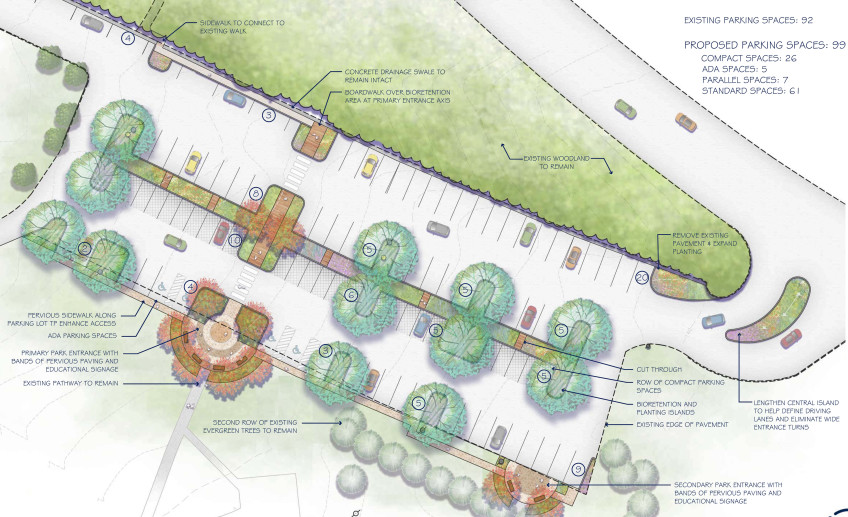Sharon Bradley of Bradley Site Design presented the Greenbelt City Council with two alternate preliminary design concepts for reconstructing and enlarging the parking lot at Albert S. “Buddy” Attick Park at the council’s April 20 worksession. Both call for use of permeable pavement and bioretention swales to curb stormwater runoff. Council seemed to be pleased with both designs, but did not express a preference. Council also was interested in moving forward but it was not clear what the next steps would be.
History
Ever since the first Lake Park Master Plan was prepared by Thurmond Donovan some 45 years ago, there has been an interest in upgrading the parking lot, but only piecemeal expansions and improvements have been undertaken. Originally the lot was beside Crescent Road and consisted of a double row of parking on a single aisle. Then there was no Kenilworth Avenue. Crescent Road intersected with Edmonston Road which ran parallel to the new Kenilworth and just west of it. Remnants of Edmonston remain south of Greenbelt Road in Berwyn Heights and north of Greenbelt Road in the Franklin Park area. At Cherrywood Lane going north, Kenilworth becomes Edmonston Road. When the Capital Beltway was built, Kenilworth became the interchange for it and Edmonston was blocked off. The Maryland State Highway Administration (SHA) sought to relocate Crescent Road further to the north away from the interchange with the relocated road to intersect with Kenilworth opposite Ivy Lane, but as a “temporary” measure moved the street only a short distance north, creating a triangular parcel of private land between the new and old roadways known as Parcel 9. The city bought Parcel 9 as well as three parcels of land on the south side of Crescent Road to add to the lake park, later named in honor of Buddy Attick, the city’s longtime Public Works director. When SHA decided to take the city’s Public Works property for the District Engineer Office, a site for a new Public Works facility was needed. The city council chose Parcel 10 for the new facility. Even though it was purchased with federal open space grant monies, it was possible to use the property that way because the new facility would support the maintenance of open space. For more on this story, click here

